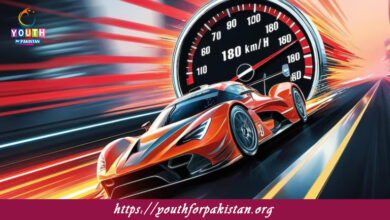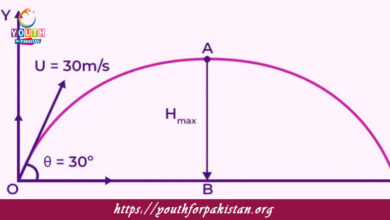System, Surrounding And State Function MDCAT MCQs

Welcome to the System, Surrounding And State Function MDCAT MCQs with Answers. In this post, we have shared System, Surrounding And State Function Multiple Choice Questions and Answers for PMC MDCAT 2024. Each question in MDCAT Chemistry offers a chance to enhance your knowledge regarding System, Surrounding And State Function MCQs in this MDCAT Online Test.
In thermodynamics, the system is defined as:
a) The part of the universe being studied
b) Everything outside the system
c) The reaction vessel only
d) All matter and energy in the universe
The surroundings in a thermodynamic system refer to:
a) The part of the universe being studied
b) The part of the universe outside the system
c) The reaction vessel only
d) The contents of the system
A state function is a property that:
a) Depends on the path taken to reach a state
b) Depends on the initial and final states of the system
c) Is independent of the final state
d) Changes with time
Which of the following is a state function?
a) Work
b) Heat
c) Internal Energy
d) Enthalpy Change
The first law of thermodynamics is a statement of:
a) Conservation of energy
b) Conservation of momentum
c) Conservation of mass
d) Conservation of matter
Heat transferred into a system is considered:
a) Positive work
b) Negative work
c) Positive energy
d) Negative energy
In an isothermal process, the temperature of the system:
a) Increases
b) Decreases
c) Remains constant
d) Fluctuates
Which of the following is NOT a state function?
a) Enthalpy
b) Pressure
c) Heat
d) Volume
In a closed system, if the volume is held constant and heat is added, the pressure of the system will:
a) Decrease
b) Increase
c) Remain constant
d) Fluctuate
In an adiabatic process, the system:
a) Exchanges heat with its surroundings
b) Does not exchange heat with its surroundings
c) Exchanges work with its surroundings
d) Remains in equilibrium
Which of the following processes is isothermal?
a) Boiling of water at a constant temperature
b) Combustion of fuel
c) Freezing of water
d) Melting of ice
Which quantity is a path function?
a) Internal Energy
b) Temperature
c) Heat
d) Pressure
In a cyclic process, the net change in internal energy is:
a) Positive
b) Negative
c) Zero
d) Dependent on the path taken
The specific heat capacity of a substance is:
a) The amount of heat required to raise the temperature by 1 degree Celsius
b) The amount of work done to raise the temperature by 1 degree Celsius
c) The change in enthalpy for a temperature increase of 1 degree Celsius
d) The internal energy change for a temperature increase of 1 degree Celsius
Which of the following is NOT a state function?
a) Entropy
b) Heat capacity
c) Internal Energy
d) Enthalpy
For an ideal gas, the internal energy depends on:
a) Pressure and Volume
b) Temperature only
c) Pressure only
d) Volume only
In a thermodynamic process, the term “path function” refers to:
a) Properties that depend on the state of the system
b) Properties that depend on the route taken between two states
c) Properties that are independent of the route taken
d) Properties that are constant during the process
The work done by a system during an isothermal expansion of an ideal gas is:
a) Directly proportional to the temperature
b) Inversely proportional to the volume
c) Directly proportional to the volume
d) Inversely proportional to the pressure
Which of the following processes is isobaric?
a) Compression of gas at constant temperature
b) Expansion of gas at constant pressure
c) Heat transfer at constant volume
d) Reactions at constant temperature
The change in enthalpy (
Δ
ΔH) for an endothermic reaction is:
a) Positive
b) Negative
c) Zero
d) Unchanged
The heat capacity of a system is defined as:
a) The amount of heat required to raise the temperature by 1 degree Celsius
b) The change in internal energy per degree Celsius
c) The work done to raise the temperature by 1 degree Celsius
d) The total heat added to the system
The efficiency of a Carnot engine depends on:
a) The temperature difference between the hot and cold reservoirs
b) The volume of the working substance
c) The pressure of the working substance
d) The type of working substance used
In a thermodynamic cycle, the work done by the system is equal to:
a) The heat absorbed by the system
b) The heat rejected by the system
c) The change in internal energy of the system
d) The net heat transferred to or from the system
The second law of thermodynamics states that:
a) Energy cannot be created or destroyed
b) Entropy of an isolated system always increases
c) The total energy of the universe remains constant
d) The internal energy of a system is constant
In a constant volume process, the work done by the system is:
a) Positive
b) Negative
c) Zero
d) Dependent on temperature
For an isothermal process involving an ideal gas, the internal energy:
a) Increases
b) Decreases
c) Remains constant
d) Varies with pressure
For an ideal gas, which quantity is a state function?
a) Work done by the gas
b) Heat transferred to the gas
c) Internal energy
d) Pressure-volume product
The change in enthalpy (
Δ
ΔH) for a reaction at constant pressure is equivalent to:
a) The work done by the system
b) The heat absorbed or released
c) The change in internal energy
d) The change in volume
In a reversible process, the maximum work done by a system is:
a) Equal to the heat absorbed
b) Equal to the heat rejected
c) Less than the heat absorbed
d) More than the heat absorbed
A process that occurs at constant temperature and pressure is called:
a) Isothermal and isobaric
b) Adiabatic and isothermal
c) Isochoric and isobaric
d) Isothermal and isochoric
In a thermodynamic process, which of the following is a correct statement about heat and work?
a) Both heat and work are state functions
b) Heat is a path function and work is a state function
c) Both heat and work are path functions
d) Heat is a state function and work is a path function
In an isochoric process, the volume of the system:
a) Increases
b) Decreases
c) Remains constant
d) Fluctuates
If you are interested to enhance your knowledge regarding Physics, Chemistry, Computer, and Biology please click on the link of each category, you will be redirected to dedicated website for each category.





